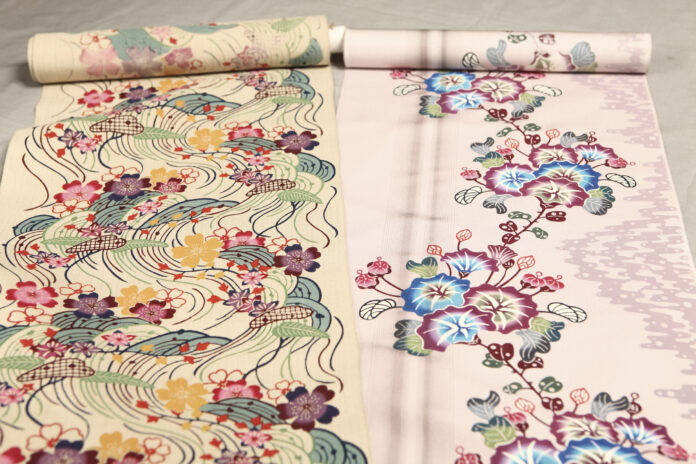A Dazzling Legacy of Okinawan Craftsmanship
Characteristics of Bingata
Bingata is known for its vivid colors and bold designs, which stand out under Okinawa’s intense sunlight. The patterns often depict nature, reflecting daily and seasonal changes in light and scenery. The colors shift dynamically, mirroring Okinawa’s vibrant environment.
During the Ryukyu Kingdom era (1429 to 1879), pattern size and color indicated social status. Large, elaborate motifs like phoenixes and peonies were reserved for the royal family, while smaller floral designs were for aristocrats. Yellow was exclusively for royalty. Beyond its beauty, Bingata symbolized social hierarchy, making it a cultural emblem of the Ryukyu Kingdom.
The Establishment of Dyeing Crafts
Ryukyu Bingata is Japan’s only traditional craft specializing in dyeing techniques. It uses a post-dyeing method to apply patterns to plain fabric and evolved into an independent craft influenced by Southeast Asian and Chinese techniques.
During the Edo period (1603-1868), techniques like “Chaya-zome” and “Yuzen-zome” advanced resist-dyeing, influencing Bingata’s development. Nanban trade (16th century) introduced Indian chintz and Javanese batik, shaping Bingata’s vibrant aesthetic.
Bingata was perfected under King Sho Kei (1713–1751). The craft adapted to Okinawa’s climate and was reserved for the royal family and aristocracy as a symbol of status. The Ryukyu royal government nurtured Bingata by employing “Ezu Bugyo” (official painters) to design patterns. Trained in Japan and China, these artists refined Bingata’s motifs, blending local and foreign influences. Their designs embodied Ryukyuan aesthetics, ensuring Bingata’s legacy as a distinctive and sophisticated art form.
Bingata established its unique cultural identity, flourishing under the Ryukyu royal government’s patronage and continuing as a treasured craft today.
Reference
佐藤実. (2003). 琉球紅型 「びんがた」. 繊維製品消費科学, 44(8), 456-460_2.



